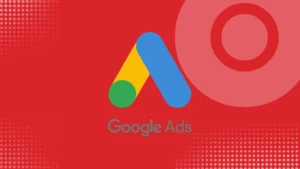Google Ads adds Video Enhancement for Performance Max

Introduction
Google Ads has recently rolled out a Video Enhancement feature for Performance Max (PMax) campaigns, aimed at improving video ad performance through automated adjustments. While this new tool offers potential for higher engagement, it has also raised concerns among advertisers over creative control.
The Video Enhancement feature is an automated tool that optimises video creatives in Performance Max campaigns. The idea behind this feature is to enhance video performance, driving more effective results without needing manual intervention. By using AI-driven technology, Google aims to boost video quality and engagement to help advertisers reach a broader audience.
(Source)
Key Features of the Update:
- Automatic Video Adaptation: Google can now automatically create:
- Vertical versions of videos
- Square versions of videos
- Shorter versions of videos
- Integration: These new video settings are directly available within Performance Max campaigns.
- Purpose: To optimise video assets for better performance and user engagement across different platforms.
Why Should Advertisers Care?
While automated features like this promise better performance, not all advertisers may be comfortable with giving up creative control. Google’s Video Enhancement feature automatically opts advertisers in by default, which could cause unforeseen adjustments to ad campaigns.
Key Concerns Include:
- Loss of creative autonomy.
- Automated adjustments that may not align with brand vision.
- Uncertainty about how changes will affect campaign outcomes.
For digital advertiser, focusing on specific creative details, such changes can alter the intended message or visual aesthetic of the ad. Therefore, it’s important to be cautious and thoroughly test how this feature impacts campaigns before fully adopting it.
Steps to Take:
- Test the feature on a small scale before applying it broadly.
- Monitor campaign performance to identify any notable differences.
- Assess if the changes align with your brand’s creative goals.
- Adjust settings as needed to retain control over your assets.
Benefits for Advertisers:
-
Increased Versatility:
Videos can now be easily customised for varied platform needs and aspect ratios.
-
Improved Attention Grabbing:
Optimised video formats are more likely to catch user attention in various viewing situations.
-
Efficiency:
Advertisers can gain more video asset coverage without requiring additional production efforts.
-
Cross-Platform Optimization:
Videos are automatically optimised for maximum success across several advertising channels.
This change reflects Google’s continued efforts to simplify ad production and improve the performance of video assets in digital advertising campaigns. By automatically modifying video material, Google Ads hopes to assist marketers in maintaining engaging and visually appealing ads across a wide range of digital platforms and formats.
Conclusion
As Google continues to integrate AI and automation into its ad platform, advertisers need to balance the benefits of optimization with the need to maintain creative control. The Video Enhancement feature may offer improved ad performance, but careful testing and adjustments will ensure that your brand’s vision remains intact.
While the feature aims to improve video performance through optimization, results can vary depending on the campaign and creative assets. Advertisers should closely monitor performance metrics such as engagement, conversions, and reach to assess its effectiveness.
The risks include potential loss of creative control, as automated changes may not always align with the advertiser’s brand message. Advertisers could also see unanticipated adjustments to their campaigns that could impact overall campaign goals and results.
Yes, it is highly recommended to test the feature on a small scale first. Monitor how it impacts performance, and evaluate whether the automated adjustments align with your creative vision. This will help you make an informed decision about whether to keep or opt out of the feature.





